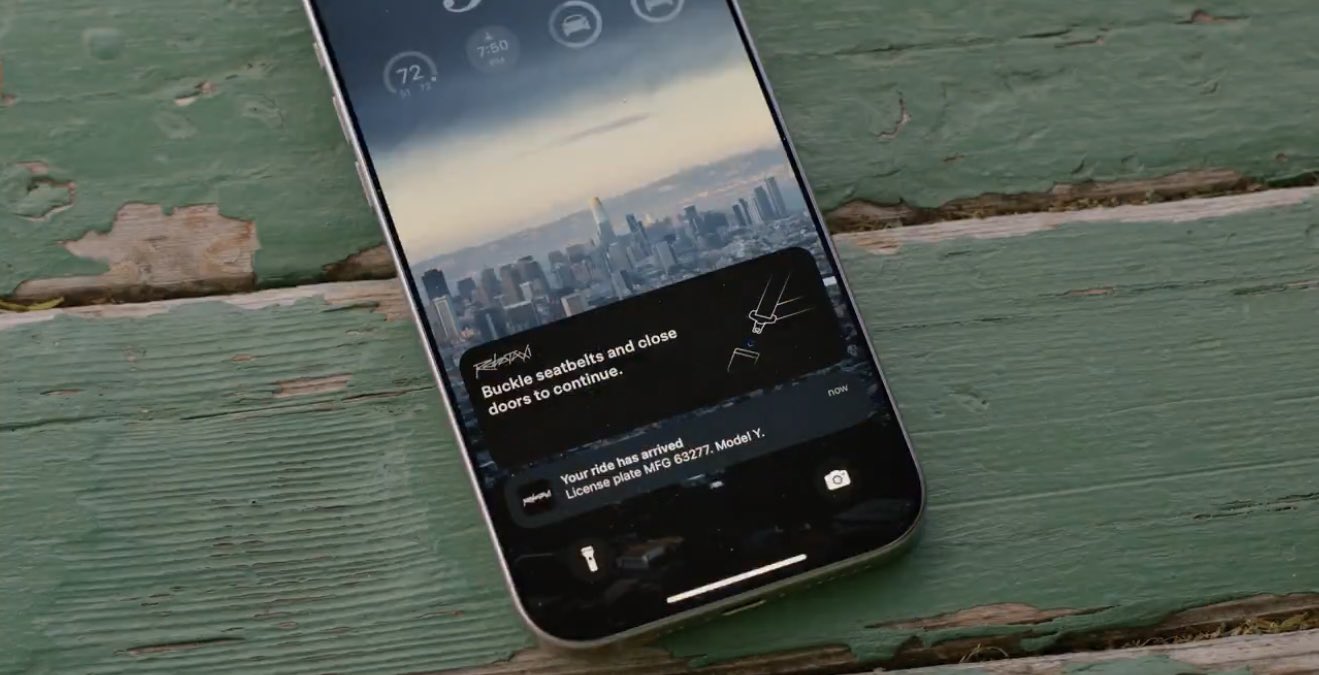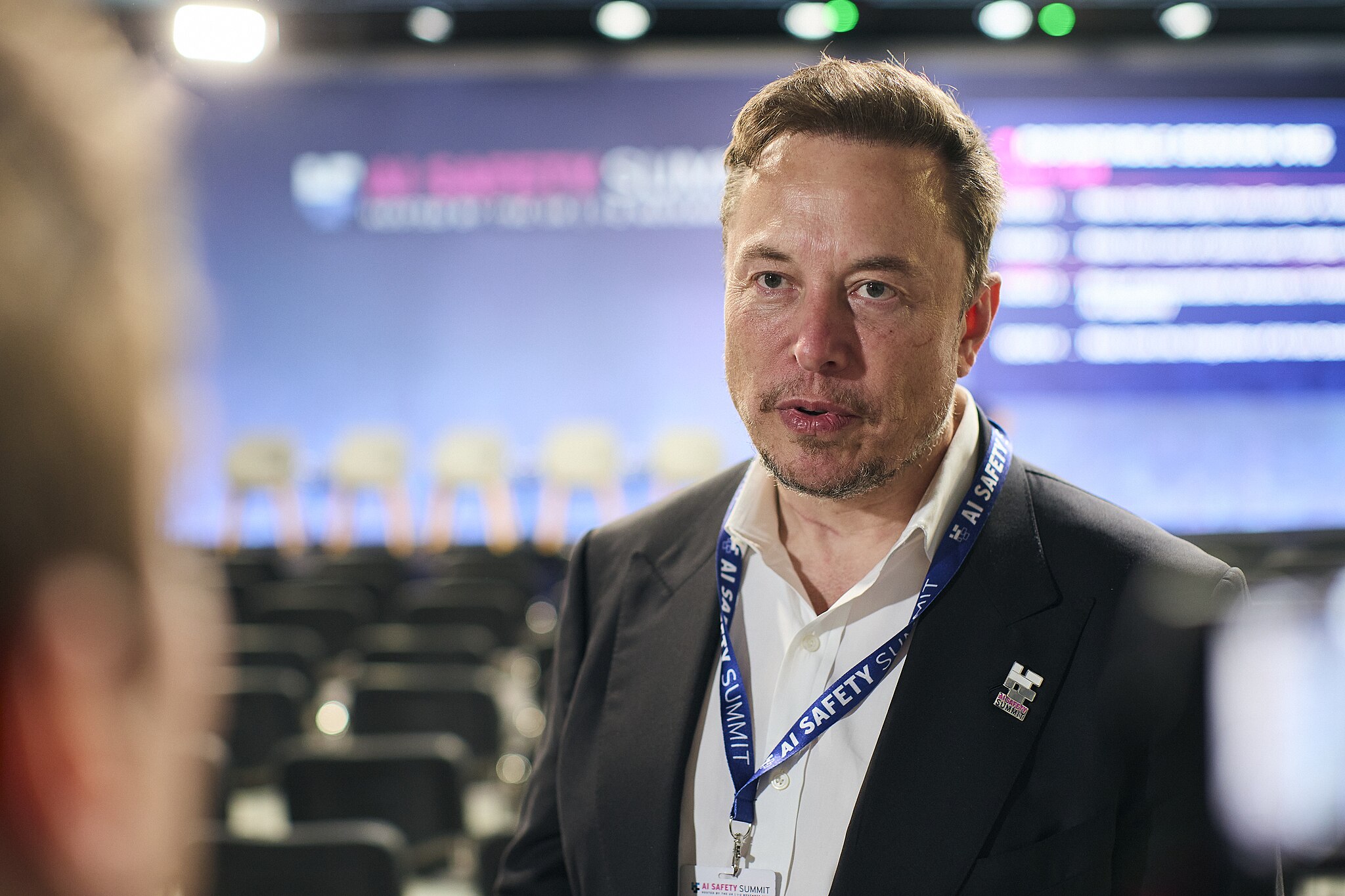Elon Musk
Tesla’s ‘Project Alicorn’ and what it means for the Robotaxi platform
Tesla plans to launch its Robotaxi ride-hailing service in June, and it’s already taking massive steps to do so.

Tesla has been planning its launch of the Robotaxi ride-hailing suite for years, but now that the company is nearing the operation of a ride-hailing platform for the first time next month, more details are coming forward.
It appears that Tesla has codenamed the Robotaxi suite, along with its ride-hailing app, as ‘Alicorn,’ a mythical creature that combines the characteristics and features of both a unicorn and a pegasus. But why this name?
It potentially could be pointing toward the vehicle’s use as both a passenger car for personal use, as well as a way to bring in passive income, something CEO Elon Musk first talked about in April 2019 when he indicated your car could work while you sleep, bringing in between $10,000 and $30,000 annually.
This would all be earned by your car being used as a driverless Robotaxi.
Tesla doubles down on Robotaxi launch date, putting a big bet on its timeline
Project Alicorn and What It Means for the Robotaxi
The name Alicorn was not recognized until a decompilation of the Tesla mobile app by Tesla App Updates on X last night. Evidently, Tesla is preparing for the June launch of the Robotaxi by inputting some new features into the smartphone app, something that we reported on recently.
Tesla will not launch a Robotaxi app that operates separately from the standard app. Everything will be ingrained into the main Tesla app that you use to access your car.
In the bigger picture, Tesla adding these specific coding strings means that it is preparing for the launch of the Robotaxi ride-hailing service, something that it has reiterated for all of this year.
Tesla plans to launch the Robotaxi platform in Austin in June, which hints at the timing of the coding to be an indicator that the company is truly ready to get things moving. While the initial rollout will be conservative and will include between 10 and 20 cars, according to Musk, the company is certainly confident that more cities will be enabled later this year for Robotaxi operation.
Ultimately, most of the fleet would ideally be made up of cars that have been purchased by consumers.
Your Tesla as a Robotaxi
Specific coding within the decompiled version of the new Tesla app revealed the ability to call the vehicle owner, meaning Tesla is undoubtedly preparing for vehicles to be driven with operators but without any intervention. Full Self-Driving will take care of the driving.
🚨 As noted by @Tesla_App_iOS, alicorn_button_title_call_driver is present in the new app version’s coding.
This supports an idea Tesla revealed years ago, that people could use their cars to generate revenue by adding them to the Robotaxi platform. https://t.co/QguKUmFVOf pic.twitter.com/E0Otu5OxXV
— TESLARATI (@Teslarati) May 7, 2025
The account explained it:
“You could turn on the rideshare option and start making money, and your car would pick people up and drop them off while you sit in the driver’s seat, but FSD would be doing all the work, and it would just send jobs to your car. Very similar to what you saw in the teaser video not that long ago. Customers would also have the ability to call the driver as well in this scenario.”
Eventually, Teslas will have no drivers and will only operate with Full Self-Driving as Robotaxi technology.

Elon Musk
Elon Musk and Tesla AI Director share insights after empty driver seat Robotaxi rides
The executives’ unoccupied tests hint at the rapid progress of Tesla’s unsupervised Robotaxi efforts.

Tesla CEO Elon Musk and AI Director Ashok Elluswamy celebrated Christmas Eve by sharing personal experiences with Robotaxi vehicles that had no safety monitor or occupant in the driver’s seat. Musk described the system’s “perfect driving” around Austin, while Elluswamy posted video from the back seat, calling it “an amazing experience.”
The executives’ unoccupied tests hint at the rapid progress of Tesla’s unsupervised Robotaxi efforts.
Elon and Ashok’s firsthand Robotaxi insights
Prior to Musk and the Tesla AI Director’s posts, sightings of unmanned Teslas navigating public roads were widely shared on social media. One such vehicle was spotted in Austin, Texas, which Elon Musk acknowleged by stating that “Testing is underway with no occupants in the car.”
Based on his Christmas Eve post, Musk seemed to have tested an unmanned Tesla himself. “A Tesla with no safety monitor in the car and me sitting in the passenger seat took me all around Austin on Sunday with perfect driving,” Musk wrote in his post.
Elluswamy responded with a 2-minute video showing himself in the rear of an unmanned Tesla. The video featured the vehicle’s empty front seats, as well as its smooth handling through real-world traffic. He captioned his video with the words, “It’s an amazing experience!”
Towards Unsupervised operations
During an xAI Hackathon earlier this month, Elon Musk mentioned that Tesla owed be removing Safety Monitors from its Robotaxis in Austin in just three weeks. “Unsupervised is pretty much solved at this point. So there will be Tesla Robotaxis operating in Austin with no one in them. Not even anyone in the passenger seat in about three weeks,” he said. Musk echoed similar estimates at the 2025 Annual Shareholder Meeting and the Q3 2025 earnings call.
Considering the insights that were posted Musk and Elluswamy, it does appear that Tesla is working hard towards operating its Robotaxis with no safety monitors. This is quite impressive considering that the service was launched just earlier this year.
Elon Musk
Starlink passes 9 million active customers just weeks after hitting 8 million
The milestone highlights the accelerating growth of Starlink, which has now been adding over 20,000 new users per day.

SpaceX’s Starlink satellite internet service has continued its rapid global expansion, surpassing 9 million active customers just weeks after crossing the 8 million mark.
The milestone highlights the accelerating growth of Starlink, which has now been adding over 20,000 new users per day.
9 million customers
In a post on X, SpaceX stated that Starlink now serves over 9 million active users across 155 countries, territories, and markets. The company reached 8 million customers in early November, meaning it added roughly 1 million subscribers in under seven weeks, or about 21,275 new users on average per day.
“Starlink is connecting more than 9M active customers with high-speed internet across 155 countries, territories, and many other markets,” Starlink wrote in a post on its official X account. SpaceX President Gwynne Shotwell also celebrated the milestone on X. “A huge thank you to all of our customers and congrats to the Starlink team for such an incredible product,” she wrote.
That growth rate reflects both rising demand for broadband in underserved regions and Starlink’s expanding satellite constellation, which now includes more than 9,000 low-Earth-orbit satellites designed to deliver high-speed, low-latency internet worldwide.
Starlink’s momentum
Starlink’s momentum has been building up. SpaceX reported 4.6 million Starlink customers in December 2024, followed by 7 million by August 2025, and 8 million customers in November. Independent data also suggests Starlink usage is rising sharply, with Cloudflare reporting that global web traffic from Starlink users more than doubled in 2025, as noted in an Insider report.
Starlink’s momentum is increasingly tied to SpaceX’s broader financial outlook. Elon Musk has said the satellite network is “by far” the company’s largest revenue driver, and reports suggest SpaceX may be positioning itself for an initial public offering as soon as next year, with valuations estimated as high as $1.5 trillion. Musk has also suggested in the past that Starlink could have its own IPO in the future.
Elon Musk
Elon Musk’s Grok records lowest hallucination rate in AI reliability study
Grok achieved an 8% hallucination rate, 4.5 customer rating, 3.5 consistency, and 0.07% downtime, resulting in an overall risk score of just 6.

A December 2025 study by casino games aggregator Relum has identified Elon Musk’s Grok as one of the most reliable AI chatbots for workplace use, boasting the lowest hallucination rate at just 8% among the 10 major models tested.
In comparison, market leader ChatGPT registered one of the highest hallucination rates at 35%, just behind Google’s Gemini, which registered a high hallucination rate of 38%. The findings highlight Grok’s factual prowess despite the AI model’s lower market visibility.
Grok tops hallucination metric
The research evaluated chatbots on hallucination rate, customer ratings, response consistency, and downtime rate. The chatbots were then assigned a reliability risk score from 0 to 99, with higher scores indicating bigger problems.
Grok achieved an 8% hallucination rate, 4.5 customer rating, 3.5 consistency, and 0.07% downtime, resulting in an overall risk score of just 6. DeepSeek followed closely with 14% hallucinations and zero downtime for a stellar risk score of 4. ChatGPT’s high hallucination and downtime rates gave it the top risk score of 99, followed by Claude and Meta AI, which earned reliability risk scores of 75 and 70, respectively.

Why low hallucinations matter
Relum Chief Product Officer Razvan-Lucian Haiduc shared his thoughts about the study’s findings. “About 65% of US companies now use AI chatbots in their daily work, and nearly 45% of employees admit they’ve shared sensitive company information with these tools. These numbers show well how important chatbots have become in everyday work.
“Dependence on AI tools will likely increase even more, so companies should choose their chatbots based on how reliable and fit they are for their specific business needs. A chatbot that everyone uses isn’t necessarily the one that works best for your industry or gives accurate answers for your tasks.”
In a way, the study reveals a notable gap between AI chatbots’ popularity and performance, with Grok’s low hallucination rate positioning it as a strong choice for accuracy-critical applications. This was despite the fact that Grok is not used as much by users, at least compared to more mainstream AI applications such as ChatGPT.








